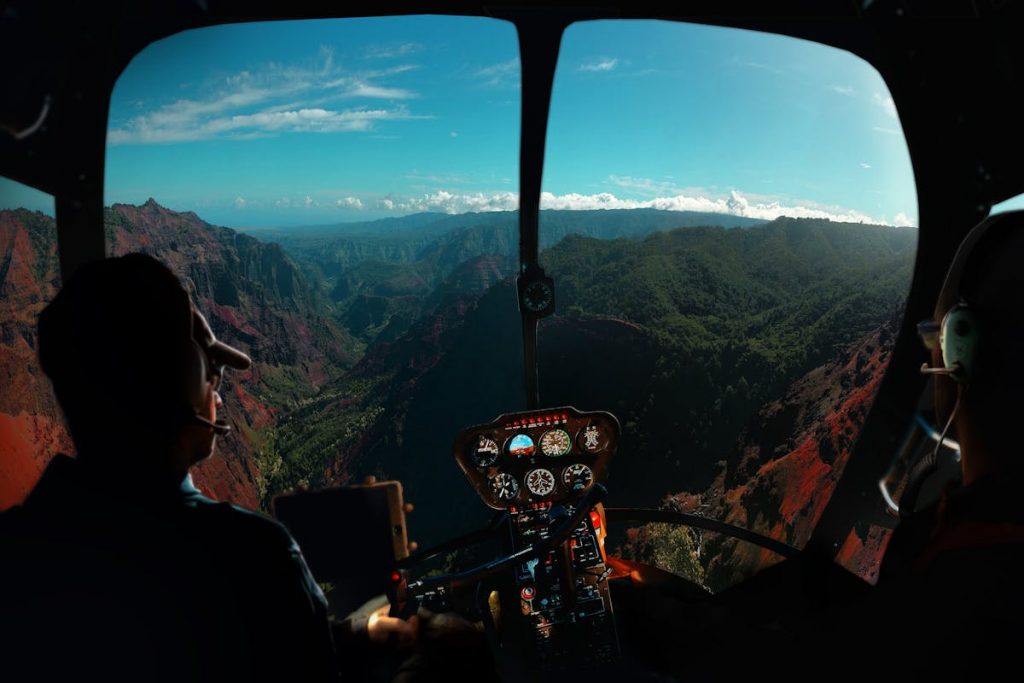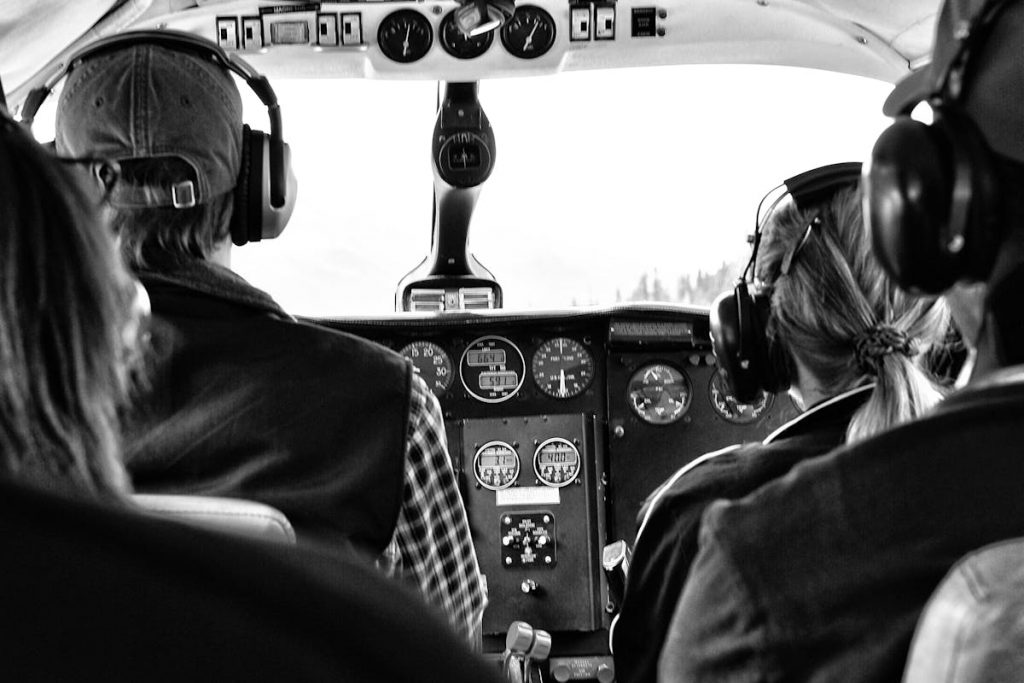- Advanced aircraft systems in pilot training are evolving, enhancing efficiency and safety through automation and technology.
- An ongoing debate is on balancing automation benefits with the crucial manual flying skills pilots need.
- Personalized training modules now allow for targeted skill development, making pilot training more effective and individualized.
- The future of aviation training lies in integrating cutting-edge technology with traditional piloting skills.
- This integration aims to elevate pilot capabilities while preserving the essence and art of flying.
Aviation has always been a nexus of human skill and technological prowess. The wondrous feat of taking to the skies owes as much to the innovation of aircraft systems as it does to the mastery of those who operate them. In our modern era, where the air is increasingly populated with sophisticated machines, the pivotal role played by advanced aircraft systems in pilot training cannot be overstated. From enabling unparalleled simulation experiences to imparting real-time feedback that enhances decision-making abilities, these systems stand as a testament to the harmonious blend of human capability and cutting-edge technology.
In this extensive exploration, we’ll soar through the skies of evolution, demystifying the importance of technology in the training of today’s pilots. Leaving the concepts of traditional flight behind, we’ll plunge into the intricate web of advanced aircraft systems and how they mold aviators into the adept professionals required to take command in an age of unprecedented aeronautical complexity.
The Impact of Technology on Pilot Training
The evolution of pilot training has mirrored the advancements in aircraft technology. In decades past, learning to fly involved a significant leap of faith, often requiring novices to take control of the aircraft with only a handful of hours under their belts. Today, modern aircraft systems, particularly simulators, serve as the foundational pillars of pilot instruction, bridging the gap between theory and real-world application.
Modern Simulation Techniques
Simulators are not new to the aviation industry, but their sophistication has skyrocketed with computing power and software development advances. These state-of-the-art platforms can now replicate virtually any flying scenario, from benign clear-sky navigation to complex emergency procedures in challenging weather conditions.
Replicating Real-Life Flying Conditions
Gone are the days when ‘flying by the seat of your pants’ was the prevailing learning method. Simulators now provide a sensory immersion with sounds, vibrations, and visuals that mimic actual flight. This high-fidelity environment allows pilots to gain experience in a risk-free setting, fine-tuning their coordination and judgment without the cost or hazard associated with traditional flight hours.
Emergency Training and Decision-Making
Perhaps the most critical service simulators offer is the ability to prepare pilots for the unexpected. Through scenarios that range from engine failures to rapid depressurization, these tools instill the muscle memory and cognitive preparedness necessary to react quickly and effectively in emergencies. The art of crisis management can be honed in a controlled setting, ensuring that pilots are skilled and poised under pressure.
Advanced Avionics and Automation
Avionics have evolved to become an aircraft’s central nervous system, continually ingesting and processing a multitude of data to assist pilots in all phases of flight. Today’s cockpits are a testament to the integration of devices and systems that make flying more efficient and present aviators with a wealth of information at their fingertips.
Latest Avionics Systems
The suite of avionic systems now includes electronic flight bags, terrain awareness and warning systems, traffic collision avoidance, and much more. These advances enhance situational awareness, providing a layer of safety that was once unattainable. They also serve as robust learning tools, helping translate complex environmental data into actionable insights for pilot decision-making.
Assistance in Flight Operations and Navigation
Autopilot systems have been a staple in many aircraft, but the latest iterations have transcended simple heading and altitude hold functions. Modern flight control systems work in concert with one another, providing navigation assistance and enhanced landing capabilities while allowing pilots to maintain a vigilant, supervisory role. These systems afford pilots the opportunity to allocate cognitive resources wisely, allowing them to focus on higher-order tasks that demand creativity and problem-solving.
From Single to Multi-Engine Aircraft: A Training Perspective
The trajectory of a pilot’s career often involves transitioning from single-engine to multi-engine aircraft, presenting challenges and skill enhancements along the way. Multi-engine flight introduces complexities that can only be navigated with keen aeronautical knowledge and the steady hand of experience.
Transitioning to More Complex Systems
The move to multi-engine flight represents a quantum leap in power management and aircraft control. Pilots must grow accustomed to the added thrust, the differences in engine performance, and the important concept of engine-out procedures. This step in training is crucial in that it expands a pilot’s comfort zone, preparing them for a wider range of eventualities that could arise in their career.
Exposure to Advanced Control Systems
Multi-engine aircraft are often equipped with more advanced control systems, including FADEC (full authority digital engine control) for precise engine management. Pilots must master the nuances of these systems, understand how to operate them efficiently and diagnose and respond to any discrepancies that may arise.
Increased Power Management Complexity
Juggling the power and thrust of multiple engines is both an art and a science. Multi-engine training instills in pilots the ability to manage these variables with aplomb, ensuring that they can extract the utmost performance while conserving fuel and operating well within the aircraft’s safety margins.
Feedback Systems and Real-Time Learning
Advanced aircraft systems offer a continuous loop of learning and improvement. The ability to receive immediate feedback on each maneuver or decision allows pilots to adjust their techniques in real-time, promoting high adaptability and self-correction.
Instant Feedback for Accelerated Proficiency
Whether through simulators or real-flight data monitoring, instant feedback mechanisms have revolutionized the pace of pilot training. Rather than waiting for an instructor’s post-flight debrief, students can receive detailed analyses of their performance almost immediately, hastening the acquisition of necessary skills and wisdom.
Challenges and Opportunities
Integrating advanced aircraft systems into pilot training is not without its hurdles. Balancing the benefits of automation with the necessity of maintaining manual flying skills is an ongoing challenge, and the industry seeks to tread this line with finesse, ensuring that pilots emerge from their training with a comprehensive set of competencies.
Balancing Automation with Manual Flying Skills
There exists a critical balance between harnessing automation’s productivity and safety gains and ensuring that pilots retain the tactile abilities that flying commandingly demands. The aviation community debates how best to achieve this equilibrium without compromising efficiency or a pilot’s ability to take control in the event of a system failure.
Customized Training Modules
The versatile nature of advanced aircraft systems allows for a level of individualized training that was once impossible. With personalized modules catering to the specific needs of each student, it is now feasible to address skill gaps with surgical precision, tailoring the learning experience to the unique capabilities and pace of the learner.
Conclusion

The chapter on advanced aircraft systems in pilot training is one of progress and potential. As technology advances, the tools at the disposal of pilots-in-training will become even more powerful, comprehensive, and indispensable. Yet, as we close this narrative, the clear directive for the future is to ensure that these systems, while crucial, never overshadow the timeless art and necessity of pilotage.
The aviators of tomorrow will be those who can deftly marry the advantages of advanced technology with the resilience and skill fostered by flight traditions. In this union, we find the true enhancement of pilot skills, a symbiosis that propels human aviation to new heights while keeping the heart of flying as vibrant as ever.




